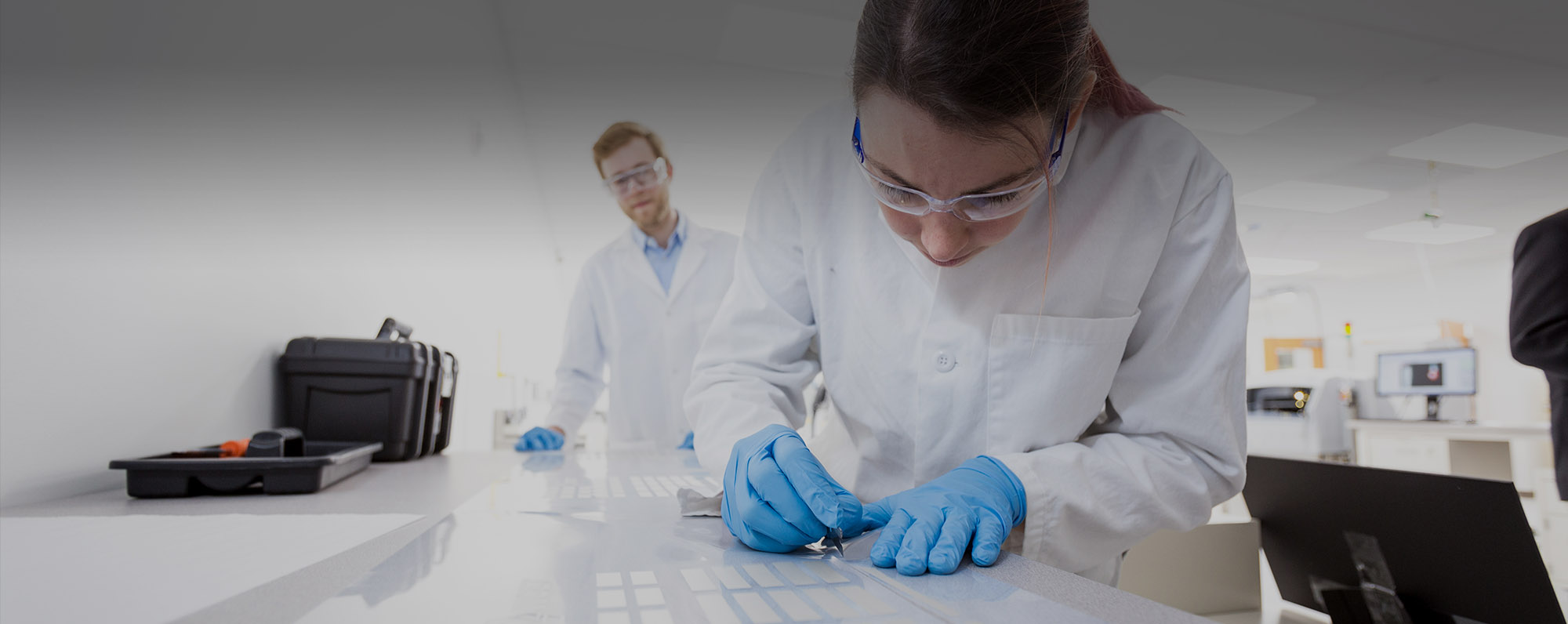Glowing Colors
Students explore how different materials absorb and emit light of different colors
QUESTION
How can materials make light of different colors?
Background
White light is composed of lights of different colors. Each color is carried by a light moving as a wave. Different materials reflect light of different colors, or they absorb light of other colors. If an object appears red, it because all the other colors besides red are absorbed and only red light is reflected. Some materials create light when they are energized by light, electricity, heat or by chemical reactions. This is called fluorescence. Some dyes or day-glo colors absorb light and emit a bright light of a new color like orange or yellow. Each wavelength of light carries energy. Ultraviolet light has the most energy and that is why it can give you a sunburn. A fluorescent light converts electricity into light which excites other chemicals coating the inside of the bulb which in turn create white light. Phosphorescence is a release of light that lasts for a period after the energy source is removed. Chemiluminescence is the emission of light from a chemical reaction for example the reaction of luminol with hydrogen peroxide in light sticks.
Research Connection
Researchers spend much of their time manipulating chemicals and materials so they absorb or emit light in way that is needed for a device. It is desirable for solar cells to absorb all wavelengths of light so they can make full use of the solar spectrum. Similarly, LEDs can be adjusted so they emit light that matches our needs. Fluorescent materials are being invented that can absorb light in one color and then re-emit it at another color where solar cell can use the energy.
NGSS Standards
| Standard Number | Standard text |
| 4-PS3-2 | Make observations to provide evidence that energy can be transferred from place to place by sound, light, heat, and electric currents. |
| 4-PS4-2 | Develop a model to describe that light reflecting from objects and entering the eye allows objects to be seen. |
| MS-PS4-2 | Develop and use a model to describe that waves are reflected, absorbed, or transmitted through various materials. |
Materials
- White LED flashlights
- Colors of construction paper or marking pens.
- Color filter
- UV marking pencils
- Day-glo markers or highlighters
- Tonic water
- Glow in the dark paper or paint
- Red laser pointer cat toy
- UV flashlights or UV key chains (safety: do not look directly into the UV flashlights or apply to skin for prolonged periods)
- UV beads
- Glow stick
Procedure
1. Pass the colored filters around and look at the colored materials or the colored pages at end of this lesson.
What colors can you see when you look through a red filter?
What happens when you combine red, green and blue filters?
2. Shine the white light and then the UV flashlight on day-glo materials and then turn off the flashlight.
Which light source made the day-glo material the brightest?
How does the material differ when viewed in a dark room with UV?
3. In a darkened room shine the white LED on glow-in-the-dark paper then turn off the flashlight. Repeat with the UV flashlight.
Which flashlight made the paper glow the brightest?
4. Place a several colored filters on the glow-in-the dark paper, illuminate with a white or UV flashlight and then turn off the flashlight.
Which color of light is able to excite the glow-in-the-dark paper? What does this tell you about the energy of different colors of light?
If you have access to a low power laser pointer shine this on the paper.
5. Cover part of the sheet with black paper and excite the other side with UV, then remove the black paper. What do you observe?
6. Break open day-glo markers and soak it in a cup of water in a glass jar until all the dye has dissolved into the solution. Shine a UV light on the jar.
7. Pour some tonic water into a glass and excite it with a UV light. Quinine is natural fluorescent chemical.
8. Write on a plain paper with the invisible ink pens. In a darkened room illuminate with a white and then uv flashlights.
9. Illuminate UV beads with the UV flashlight or sunlight.
Does UV change the emission or absorption of light from the beads?
How long do the beads stay colored?
10. Demonstrate a glo-stick. This shows chemo luminescence.
Extensions
You can make a version of glowing sign by filling a clear plastic tubing with day-glo water solution from above. Plug the ends of the tube with hot glue. Bend the tubing to spell out something and then illuminate with a UV flashlight.
Demonstrate electroluminescent wire. This material lights up when voltage is applied to both ends.
Resources
Where to get your materials
UV Flashlights – $20 for 5 lights
Mini Keychain UV – $10 for 6
Glow in the Dark Paper – $9.60 for 2 sheets
UV Pens – $4.69 for 6
Color filters
Electroluminescent Wire – $7.59



